Business VoIP Featured Article
Using an IP Video Phone as an Omnichannel Communications Hub
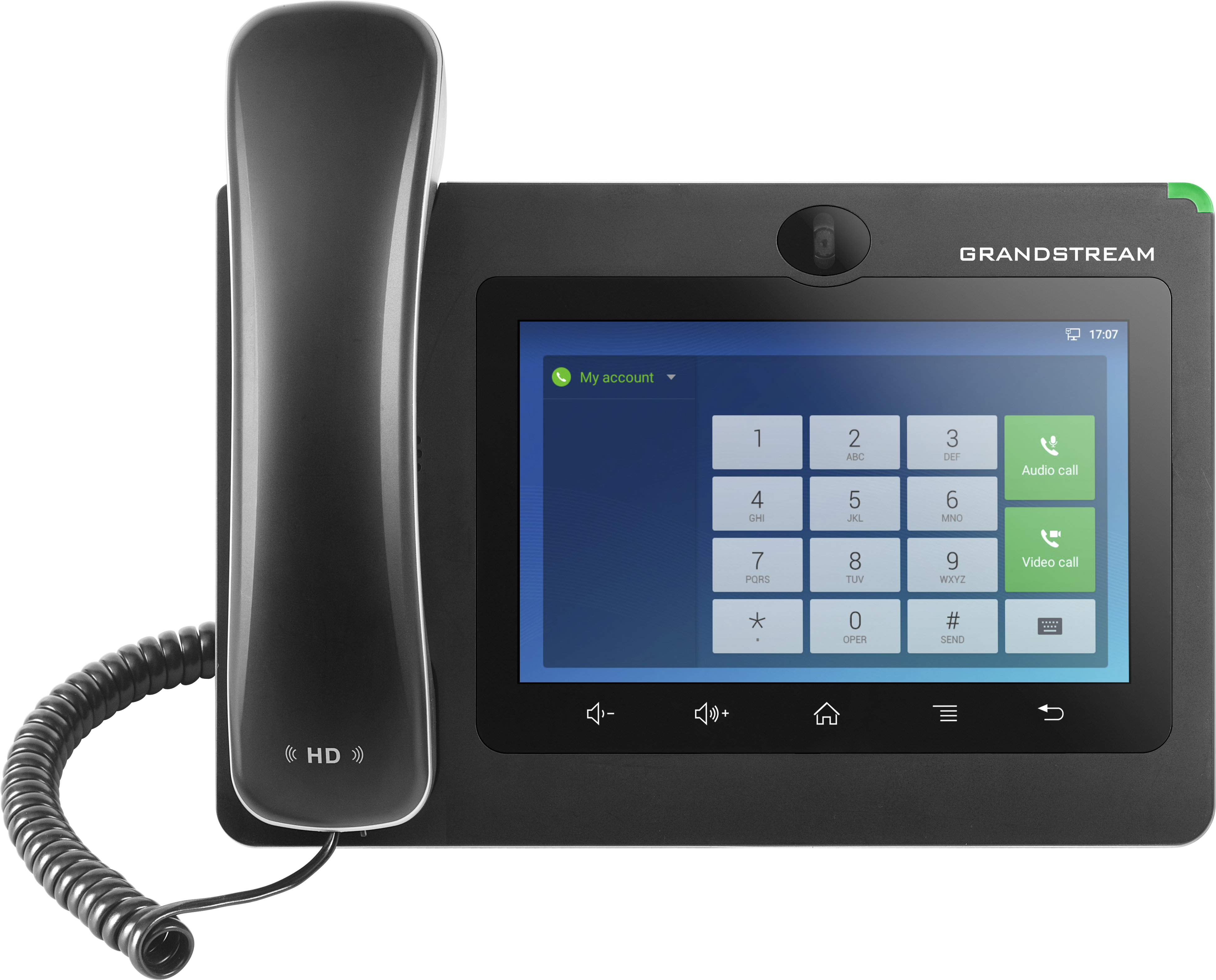
A communications hub as part of the IoT ecosystem can prove to be very useful. In fact, an omnichannel communications hub with cloud-based applications will empower the user community with tools and technologies, such as Unified Communications (UC) and IoT applications, that will result in improved productivity. From a strategy perspective for a Smart Building, a communications hub that can integrate with SIP-based security cameras, door systems, video conferencing systems and services will be valuable.
It is all about applications. When new applications become available, just download them and customize them for that one device based on end-user preference. A communications hub, with a touch screen display that offers voice/video collaboration and access to a broad spectrum of other applications is a game changer.
Grandstream Networks’ GXV3370 IP Video touch screen phone shown in Fig. A is one such device that can serve as your all-in-one communications hub and a multimedia platform. You can refer the GXV3370 IP Video Phone’s data sheet here.
The GXV3370 running Android 7.0 operating system is equipped with:
- 4-core 1.3GHz ARM Cortex A53 processor with 2GB RAM and 8GB eMMC Flash
- 7’’ (1024×600) capacitive 5-point touch screen TFT LCD
- Tiltable mega-pixel 720p 30fps CMOS camera with privacy shutter for video calling and HD video conferencing
Support for 16 lines with up to 16 SIP accounts - Flexible API/SDK support for custom application development
- Integrated Wi-Fi[ dual band 2.4Ghz/5Ghz-802.11 a/b/g/n]
- Integrated Bluetooth 4.0 +EDR [for connecting with Bluetooth headsets and syncing with mobile devices]
- Auxiliary Ports- RJ9 headset jack (for headset EHS), 3.5mm jack for stereo headset with microphone, USB port, SD card slot, HDMI-out (to connect a display device)
- Auto-sensing dual switched ethernet [10/100/1000 Mbps] ports with integrated PoE/PoE+ support-802.3af Class 3, PoE+ 802.3at, Class 4
- Video codecs and capabilities such as H.264 BP/MP/HP, video resolution up to 720p, frame rate up to 30 fps, bit rate up to 2Mbps, 3-way video conference (720p 30fps), anti-flickering, auto focus and auto exposure
- HD Audio-HD handset and speakerphone with support for wideband audio
- Voice codecs and capabilities include-G.711μ/a, G.722 (wide-band), G.726-32, iLBC, Opus, G.729A/B, in-band and out-of-band DTMF (In audio, RFC2833, SIP INFO), VAD, CNG, AEC, PLC, AJB, AGC, ANS
- Native applications: Contacts, Call History, File Manager, MPK, Settings, Browser, Voicemail, Clock, Recorder, GS Market, etc. and 3rd party apps such as Skype, Google Hangouts, Skype for Business, etc.
Let us now deploy the GXV3370 IP Video phones to check its functionality and conduct SIP interoperability testing with other vendor’s SIP services and offerings that are in the cloud.
FUNCTIONAL TESTING
We will use two Grandstream Networks’ GXV3370 IP Video phones running the main software release version 1.0.1.33 along with the following multi-vendor SIP environments (Please refer Fig. B).
- Public SIP trunk services
- Patton SmartNode SN5570 Series eSBC (Enterprise Session Border Controller) running software version Trinity 3.15.0-19023 [ we used the Patton Cloud to upgrade the eSBC to this latest version] to provide SIP demarcation from the public SIP trunk provider while maintaining interoperability and inter-connectivity
- Bluetooth Headset for hands free connectivity
- Wideband Monaural noise canceling wired headset
- USB corded UC headset
- Microsemi PDS-208G Digital Ceiling PoE switch so that the GXV3370 IP Video phones can efficiently receive PoE power and data over standard ethernet cables.
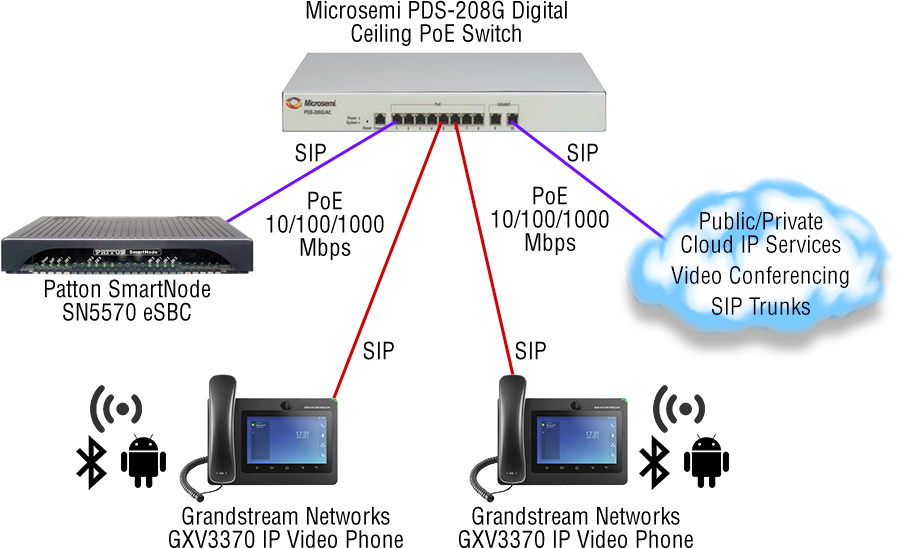
Fig. B: Functional and SIP inter-operability testing of GXV3370 IP video phones
We plugged in the two GXV3370 IP Video phones to the Microsemi PDS-208G Digital Ceiling PoE switch, allowing for an Ethernet infrastructure that supports data and power for IP-based devices. The units powered up using PoE offered by the Microsemi PDS-208G Digital Ceiling PoE switch. Using the LCD touch screen on the GXV3370, we navigated to the icon labeled Settings (Please refer Fig. C).
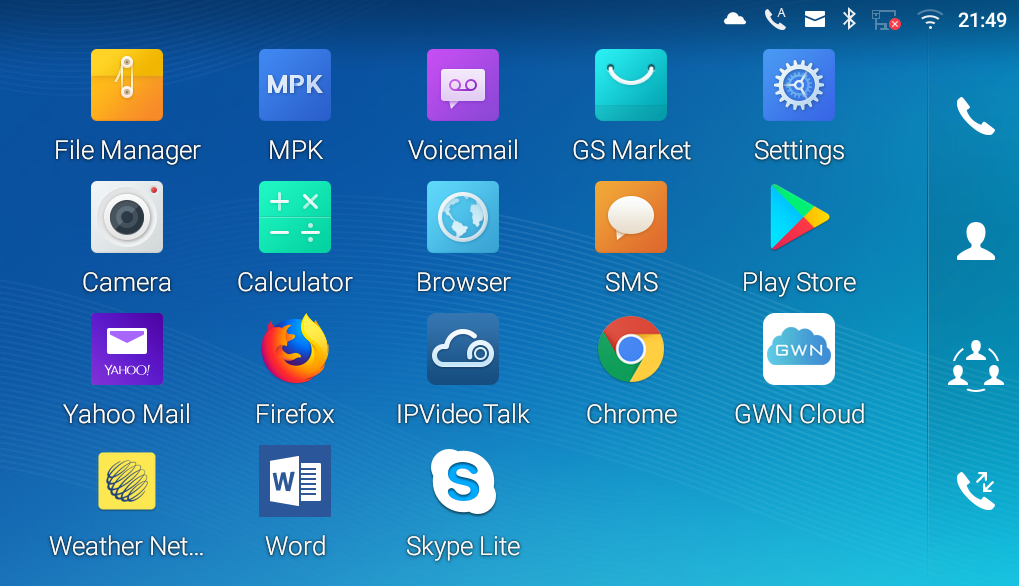
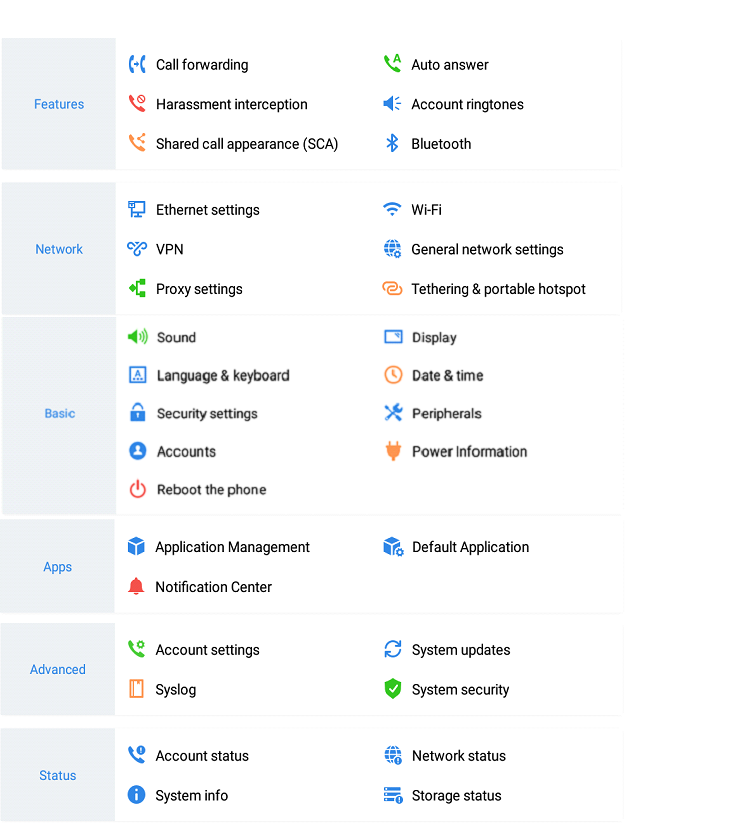
Fig. C: GXV3370 IP Video Phone Settings interface
Within the Network category, we selected WiFi, turned it ON, and configured the appropriate settings. To test the Integrated WiFi (dual band 2.4Ghz/5Ghz), we successfully connected the GXV3370 to two different WiFi access points (one operating in the 2.4Ghz band and the other in the 5Ghz band). Then, in the Features category, we selected Bluetooth, turned it ON and paired the GXV3370 with the Bluetooth headset. For our functional testing, we also plugged in the wideband mono noise canceling wired headset to the phone’s headset jack.
One of the best aspects of the GXV3370 touchscreen display is that it is very user friendly and presents an interactive user touch interface that makes navigating very easy. Our SIP interoperability testing included setting up three SIP lines/accounts and we used the embedded web interface on the GXV3370. One SIP account was for peer-to-peer IP calls between the two GXV3370s, another for UCaaS, and the third SIP account was for the SIP trunk through the Patton Smartnode 5570 eSBC (Please refer Fig.D). Since both the GXV3370s were configured with the appropriate settings, we now commenced our functional and SIP interoperability testing.
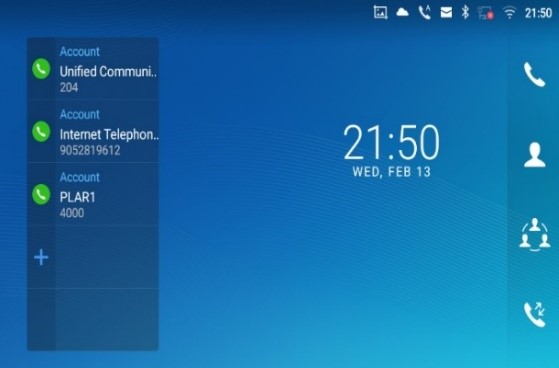
Fig.D: GXV3370 IP Video Phone SIP account
The first functional test was peer-to-peer IP calls between the two GXV3370s. It enabled us to establish a concurrent audio and video session between them. The call detail of that audio/video call is as shown below in (Please refer Fig. E) you will note that the audio codec we selected for this test was Opus and the video codec was H.264

Fig. E: GXV3370 IP Video Phone peer-to-peer call detail
Before we started the ITSP SIP account testing, we used the Patton Cloud (the eSBC was already provisioned on it), which is a single portal network orchestration tool in the cloud to upgrade the software on our CPE device (the Patton SmartNode SN5570 eSBC) to Trinity 3.15.0-19023. That was easy, as it was just a click and go operation. We successfully tested inbound/outbound audio calling from the two GXV3370s using the ITSP-provided external SIP trunk through the Patton SmartNode SN5570 Series eSBC.
While the call was in progress, we used the ad hoc call recording feature on the GXV3370 to record the test call. The next test we conducted was with the UCaaS account for station to station audio calling, wherein the GXV3370s registered successfully with the UCaaS platform in the cloud. The GXV3370 configuration was simple and easy for our testing. Very quickly we had the GXV3370 operating as a SIP video phone. All test calls worked as expected. Managing the files on the GXV3370 via a PC was very easy. You navigate to File Manager, select FTP, and start the FTP server. (Please refer Fig. F).
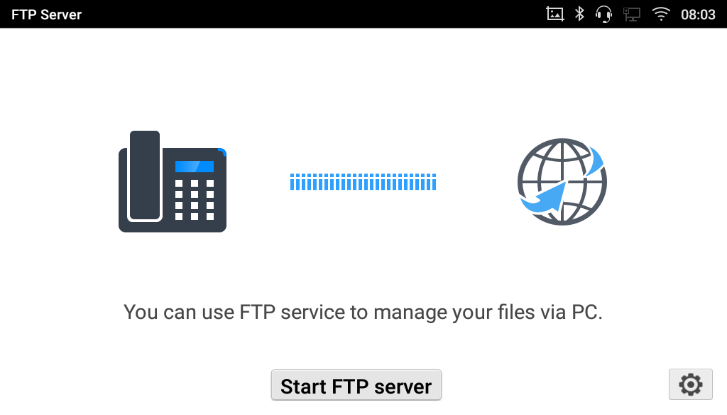
Fig. F: GXV3370 IP video phone FTP Serve
Using the GXV3370 as a communications hub, we also installed third-party communications applications from the google play store. One other noteworthy aspect is the status bar on top of the GXV3370 screen that provides visual notifications for the status and quick access to the important system settings (Please refer Fig. G).
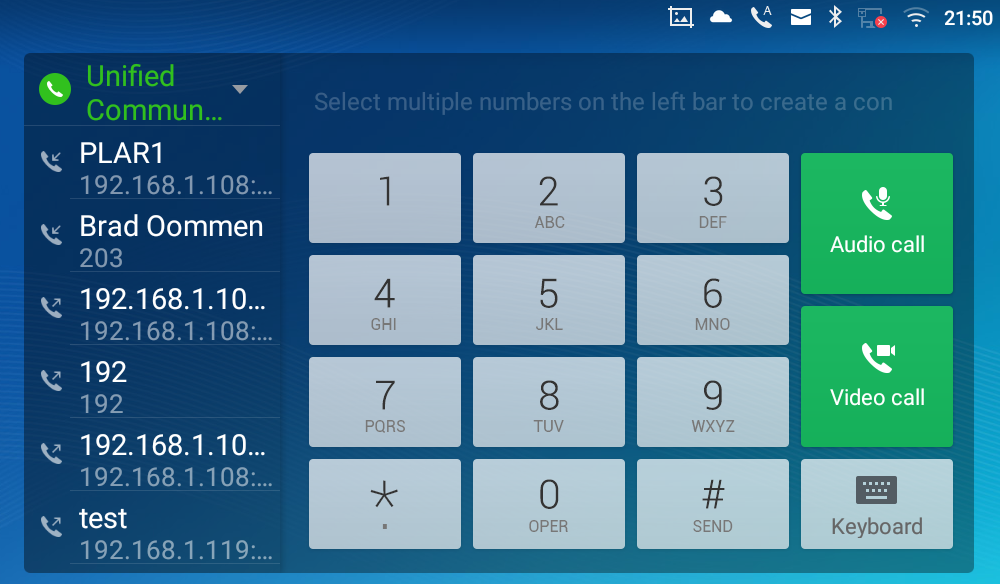
Fig. G: GXV3370 IP video phone status bar on the top
Additionally, as a part of the functional testing, we selected various audio codecs and used the auxiliary ports on the GXV3370. We connected the HDMI port to an external display. To the USB port, we plugged in an external USB storage device and a USB corded UC headset. Grandstream Networks’ GXV3370 IP Video phone as an Omnichannel Communications hub can deliver a positive user experience.
Conclusion:
As an Omnichannel Communications hub, we were impressed with the simplicity, ease of use and the user-friendly touch screen interface. Our functional testing and interoperability testing of the Grandstream Networks GXV3370 in a multi-vendor SIP environment was successful. You can harness the GXV3370’s application capabilities in various scenarios and environments, as it supports installation of third-party applications and offers flexible SDK support for custom applications. We recommend that you test drive the GXV3370 in your environment. It will act as a catalyst for you to harness its application capabilities to effectively communicate and connect.
Edited by Erik Linask
HOME
Key Benefits
Unlimited Calling & Faxing
Number Portability
Auto Attendant
Voicemail-to-Email
Instant Conference Calls
HD Voice Quality
LEARN MORE